--
OOOOOOOOOOOOOOOOOOOOOOOOOOOOOOOOOOOOOOOOOOOOOOO
West Side Story, one of my personal favorite movies of all time and without a doubt my favorite musical. Why do I love this film so much? Because of it's high energy, great actors, terrific songs, awesome dance numbers, and beautiful love story. As an updated Romeo and Juliet story, we visit the streets of Manhattan, two gangs of different ethnicities, Tony and Maria, the two fall in love by are torn apart by the gang's hatred for each other. Sounds pretty basic, not to mention we have dancing gangs, they don't really fight, they just dance, yeah again sissy, but not in this story! The crew and cast put their heart and soul into this film and it truly paid off as this is the best picture of 1961.
In the streets of Manhattan the Jets, led by Riff, and a rival gang of Puerto Rican immigrants, the Sharks, led by Bernardo begin to rumble. The police arrive and tell the "hoodlums" to get off the streets. The Jets discuss challenging the Sharks to one last all out "rumble", that will decide who gets control of the streets, and they will deliver the challenge to the Sharks at a dance later that night. Riff decides that his best friend Tony, a co-founder of the Jets who has left the gang to work at a local store, would be the best member of the Jets to present the challenge to the Sharks. When Riff visits Tony at the store, Tony initially refuses Riff's request to meet with the Sharks, but he later changes his mind. At the bridal shop where she works, Bernardo's sister, Maria complains to Bernardo's girlfriend, Anita. Maria believes that Bernardo is overprotective, never allowing her to have enough fun. Bernardo arrives and takes her to the dance. At the gym, the Jets, Sharks and girls are greatly enjoying themselves, but the rival gang members and their girlfriends remain apart. Tony and Maria see each other, become infatuated, almost going into a trance-like state and begin to dance, then embrace in a kiss. Bernardo pushes them away from each other and orders Maria home, and tells Tony to stay away from his sister.
Tony discreetly visits Maria outside the fire escape at her home and they confirm their love. The next day at the bridal shop, Maria sings to her coworkers about how happy she is. Tony arrives to see Maria, she pleads with Tony to prevent the rumble altogether, even if only a fist fight is planned, and Tony promises to do so. At the the rumble, the fight begins between two rival gang members. Tony arrives and tries to stop the fight, but is met with ridicule and mockery from Bernardo and the Sharks. Unable to stand by and watch his best friend be humiliated, Riff angrily lashes out and punches Bernardo. Drawing their knives, Riff and Bernardo fight each other, their duel ending with Bernardo killing Riff. Enraged, Tony kills Bernardo with Riff's knife! Tensions are now at an all time high as both gangs want to get even and Tony and Maria's love is being torn apart by all the hate.
West Side Story is truly a special movie, I personally don't know why it's not on the top 250 IMDb movies, if you are going to watch a musical this is the one that I always recommend. We don't get musicals to this big scape any more, they don't have the same heart as West Side Story had. The actors are absolutely incredible, it's so weird when I watched a documentary on this movie, apparently Natalie Wood and Richard Beymer hated each other, but I guess that must help during the lust scenes because hate and love are practically in the same category when it comes to passion. But the true stars of the film are Rita Moreno as Anita and Russ Tamblyn as Riff, great performances from the both of them. West Side Story is a movie that has no flaws what so ever and anyone who wants to argue me on that, feel free to send me a message.
In the streets of Manhattan the Jets, led by Riff, and a rival gang of Puerto Rican immigrants, the Sharks, led by Bernardo begin to rumble. The police arrive and tell the "hoodlums" to get off the streets. The Jets discuss challenging the Sharks to one last all out "rumble", that will decide who gets control of the streets, and they will deliver the challenge to the Sharks at a dance later that night. Riff decides that his best friend Tony, a co-founder of the Jets who has left the gang to work at a local store, would be the best member of the Jets to present the challenge to the Sharks. When Riff visits Tony at the store, Tony initially refuses Riff's request to meet with the Sharks, but he later changes his mind. At the bridal shop where she works, Bernardo's sister, Maria complains to Bernardo's girlfriend, Anita. Maria believes that Bernardo is overprotective, never allowing her to have enough fun. Bernardo arrives and takes her to the dance. At the gym, the Jets, Sharks and girls are greatly enjoying themselves, but the rival gang members and their girlfriends remain apart. Tony and Maria see each other, become infatuated, almost going into a trance-like state and begin to dance, then embrace in a kiss. Bernardo pushes them away from each other and orders Maria home, and tells Tony to stay away from his sister.
Tony discreetly visits Maria outside the fire escape at her home and they confirm their love. The next day at the bridal shop, Maria sings to her coworkers about how happy she is. Tony arrives to see Maria, she pleads with Tony to prevent the rumble altogether, even if only a fist fight is planned, and Tony promises to do so. At the the rumble, the fight begins between two rival gang members. Tony arrives and tries to stop the fight, but is met with ridicule and mockery from Bernardo and the Sharks. Unable to stand by and watch his best friend be humiliated, Riff angrily lashes out and punches Bernardo. Drawing their knives, Riff and Bernardo fight each other, their duel ending with Bernardo killing Riff. Enraged, Tony kills Bernardo with Riff's knife! Tensions are now at an all time high as both gangs want to get even and Tony and Maria's love is being torn apart by all the hate.
West Side Story is truly a special movie, I personally don't know why it's not on the top 250 IMDb movies, if you are going to watch a musical this is the one that I always recommend. We don't get musicals to this big scape any more, they don't have the same heart as West Side Story had. The actors are absolutely incredible, it's so weird when I watched a documentary on this movie, apparently Natalie Wood and Richard Beymer hated each other, but I guess that must help during the lust scenes because hate and love are practically in the same category when it comes to passion. But the true stars of the film are Rita Moreno as Anita and Russ Tamblyn as Riff, great performances from the both of them. West Side Story is a movie that has no flaws what so ever and anyone who wants to argue me on that, feel free to send me a message.
OOOOOOOOOOOOOOOOOOOOOOOOOOOOOOOOOOOOOOOOOOOOOOOOOOO
Nothing like it, before or since.
This masterpiece is already 56 years old and as it happens with masterpieces, it has kept intact all of its energy all of its power and it remains a mind blowing novelty. "Singin'n'the Rain" has those qualities but the setting is a natural for the infections musical numbers. In "West Side Story" we visit Romeo And Juliet in New York among feuding street gangs. Robert Wise and Jerome Robbins create an experience for the ages. Natalie Wood is devastatingly gorgeous and even if the singing voice is not hers she manages to make it hers. The blandness of Richard Beymer works wonders for his Tony and Russ Tamblyn is a dynamo of youthful exuberance. But perhaps, Rita Moreno and George Chakiris steal the limelight. They are spectacular - As Oscar time they won Oscars over Judy Garland and Montgomery Clift in "Judgement At Nuremberg" To conclude let me reiterate "West Side Story" is a film to visit and revisit.
OOOOOOOOOOOOOOOOOOOOOOOOOOOOOOOOOOOOOOOOOOOOOOOOOOOOO
In An Era of Great Musicals, "West Side Story" Was Among the Best
When they say they don't make movies like they used to, this is the sort of film they are talking about. Despite its flaws (and there are some), it is easily one of the best musicals ever made. Beginning with the overture and the opening scenes of New York City, circa 1960, it almost screams "classic." Some have criticized Natalie Wood's Maria (her dubious accent and the dubbed-in singing) or Richard Beymer's Tony (his slightly smarmy interpretation of the ex gang member gone straight), but the fact remains, their wholesome, fresh-faced characterizations defined the roles. And you simply can't top the film's instrumental score, its great songs ("Maria," "Tonight," "America," "I Feel Pretty," "A Place For Us," "I Have a Love," and "Officer Krupke"), its excellent choreography, or its very effective cinematography. Rita Moreno, as Anita, delivers what was probably her best performance in the movies, in particular her dancing and singing in "America," while Russ Tamblyn, as Rif, the charismatic leader of the Jets, is seldom given the credit he deserved. Natalie Wood on the rooftop, anticipating another meeting with her newfound love, is a vision of grace and innocence, while George Chakiris as her brother Bernardo, the leader of the Sharks, is very convincing as the persecuted immigrant/mean-spirited hoodlum. And its not as if these are the only actors who did a great job. A number of the other supporting roles are delivered with memorable professionalism, too. In fact, the cast as a whole is superb.
This movie poignantly (if simplistically) explores the purity of first love, while tackling intolerance and racism head-on, avoiding the tired, politically correct clichés that movies of today too often wallow in. Despite the simplicity of the story, it is always an emotional experience, no matter how many times you've seen it. While it is true that the Academy Awards have become very politicized, and no doubt always were to a degree, this movie snagged ten of them when great movies were being turned out almost as often as mindless pap is today. Not to be missed.
OOOOOOOOOOOOOOOOOOOOOOOOOOOOOOOOOOOOOOOOOOOOOOOOOOO
Dynamic and exhilarating landmark musical offering a still-topical spin on the age-old "Romeo and Juliet" story.
It is a testament to the musical and theatrical brilliance of "West Side Story" that this teenage urban love story, set to Shakespeare's classic "Romeo and Juliet," has survived its outmoded 50s-style book (Arthur Laurents) replete with "Dead End Kids" posturings and corny, streetwise lingo (I still cringe when I hear the word "daddio"). For nowhere will you experience such electrifying, jaw-dropping choreography (Jerome Robbins). Nowhere will you thrill to a more exhilarating, passionate, full-throttled score (Leonard Bernstein, with Stephen Sondheim providing the libretto). And nowhere will you find a more dynamic, better-crafted musical that arguably surpasses its Broadway stage predecessor from overture to finale.
Maria, a lovely, innocent Puerto-Rican girl ("Juliet") and sister of a formidable gang leader, falls for an opposing though reluctant white-skinned gang member Tony ("Romeo") with tragic results. Set in a tough New York neighborhood where the two disparate groups, the Jets ("the Montagues") and Sharks ("the Capulets"), battle for street territory armed with knives, zip guns and rocks, the determined love affair sets off a calamitous chain of events that, in the end, manage to instill hope in diversity. Topical enough?
The strength of "West Side Story" is that it does not try to hide its stage roots. It still unfolds like a musical play. The film is expanded but the talented cast is not dwarfed by on-location surroundings or panoramic camera work ("South Pacific" fell victim to this). On the contrary, the cast lights up every single playing space with sure-footed aliveness and plenty of 'tude. Co-directors Robert Wise and Jerome Robbins stay true to the original, having the sense not to alter or butcher the score ("Man of La Mancha") or haul in a slew of new, untried songs ("On the Town", which actually worked for that musical). In a particularly "Wise" move (sorry), two numbers were repositioned to enhance or intensify the narrative flow. In the film version, the "Officer Krupke" number sparked by a goofy Three Stooges-like levity, is moved earlier into the proceedings BEFORE the serious rumbles start, serving neatly as a light and humorous anti-establishment statement. The tightly-coiled, finger-snapping "Cool" number is pushed way back, giving both song and situation a heightened impact as it goads and ignites the Jet's feelings of pent-up rage and retaliation AFTER their leader is murdered. Smart move, daddio.
The late Natalie Wood has been crucified by critics for her ethnic portrayal of Maria ever since day one. It was not because of any political incorrectness at the time (reigning Hollywood white glamour queen goes Latino) for that hot issue didn't erupt until decades later. It was her limited range as an actress. But over the years, I have grown accustomed to Wood. Yes, despite the melodramatic leanings, the necessity of vocal dubbing (by the incomparable Marni Nixon), the flawed Puerto-Rican accent and the general overuse of Coppertone, I still feel for this Maria. What Wood does offer is utmost sincerity and heartfelt poignancy. So I'm one person who has gotten off the Natalie Wood-bashing wagon. Richard Beymer is another matter. An extremely weak, uncool choice for Tony, his toothy, freshly-scrubbed, chipmunk-like mug and awkward gait reads more like library assistant than gang member. Who would have thought Beymer would be the one to dazzle us much later in the totally cool and offbeat "Twin Peaks"? Still, Wood and Beymer commit themselves 100% and manage to create a credible, if not charismatic, love duet that doesn't get in harm's way.
Since the film's emphasis is really on dance, it's the flashy second leads who provide the real firepower. Rita Moreno's smouldering Anita ("The Nurse") is a spitfire of anger and attitude, while George Chakiris as her Shark leader boyfriend Bernardo ("Tybalt") demonstrates slick, controlled menace. Both Oscar-awarded here, Chakiris, in his debut, proved a lightweight acting talent himself, never finding a role like this again. Russ Tamblyn as Riff ("Mercutio"), the recently inaugurated leader of the Jets, is a hotbed of jaunty, scrappy impatience. Both he and Chakiris are riveting as they demonstrate poetry in motion, leading a pack of Edward Villela-like tough guys into athletic, gravity-defying dance moves.
"Romeo and Juliet vs. the 'Hood" should be required viewing for all grade-school children solely on the basis of art and education. The adults already know the value of this treasure.
Maria, a lovely, innocent Puerto-Rican girl ("Juliet") and sister of a formidable gang leader, falls for an opposing though reluctant white-skinned gang member Tony ("Romeo") with tragic results. Set in a tough New York neighborhood where the two disparate groups, the Jets ("the Montagues") and Sharks ("the Capulets"), battle for street territory armed with knives, zip guns and rocks, the determined love affair sets off a calamitous chain of events that, in the end, manage to instill hope in diversity. Topical enough?
The strength of "West Side Story" is that it does not try to hide its stage roots. It still unfolds like a musical play. The film is expanded but the talented cast is not dwarfed by on-location surroundings or panoramic camera work ("South Pacific" fell victim to this). On the contrary, the cast lights up every single playing space with sure-footed aliveness and plenty of 'tude. Co-directors Robert Wise and Jerome Robbins stay true to the original, having the sense not to alter or butcher the score ("Man of La Mancha") or haul in a slew of new, untried songs ("On the Town", which actually worked for that musical). In a particularly "Wise" move (sorry), two numbers were repositioned to enhance or intensify the narrative flow. In the film version, the "Officer Krupke" number sparked by a goofy Three Stooges-like levity, is moved earlier into the proceedings BEFORE the serious rumbles start, serving neatly as a light and humorous anti-establishment statement. The tightly-coiled, finger-snapping "Cool" number is pushed way back, giving both song and situation a heightened impact as it goads and ignites the Jet's feelings of pent-up rage and retaliation AFTER their leader is murdered. Smart move, daddio.
The late Natalie Wood has been crucified by critics for her ethnic portrayal of Maria ever since day one. It was not because of any political incorrectness at the time (reigning Hollywood white glamour queen goes Latino) for that hot issue didn't erupt until decades later. It was her limited range as an actress. But over the years, I have grown accustomed to Wood. Yes, despite the melodramatic leanings, the necessity of vocal dubbing (by the incomparable Marni Nixon), the flawed Puerto-Rican accent and the general overuse of Coppertone, I still feel for this Maria. What Wood does offer is utmost sincerity and heartfelt poignancy. So I'm one person who has gotten off the Natalie Wood-bashing wagon. Richard Beymer is another matter. An extremely weak, uncool choice for Tony, his toothy, freshly-scrubbed, chipmunk-like mug and awkward gait reads more like library assistant than gang member. Who would have thought Beymer would be the one to dazzle us much later in the totally cool and offbeat "Twin Peaks"? Still, Wood and Beymer commit themselves 100% and manage to create a credible, if not charismatic, love duet that doesn't get in harm's way.
Since the film's emphasis is really on dance, it's the flashy second leads who provide the real firepower. Rita Moreno's smouldering Anita ("The Nurse") is a spitfire of anger and attitude, while George Chakiris as her Shark leader boyfriend Bernardo ("Tybalt") demonstrates slick, controlled menace. Both Oscar-awarded here, Chakiris, in his debut, proved a lightweight acting talent himself, never finding a role like this again. Russ Tamblyn as Riff ("Mercutio"), the recently inaugurated leader of the Jets, is a hotbed of jaunty, scrappy impatience. Both he and Chakiris are riveting as they demonstrate poetry in motion, leading a pack of Edward Villela-like tough guys into athletic, gravity-defying dance moves.
"Romeo and Juliet vs. the 'Hood" should be required viewing for all grade-school children solely on the basis of art and education. The adults already know the value of this treasure.
OOOOOOOOOOOOOOOOOOOOOOOOOOOOOOOOOOOOOOOOOOOOOOOOOOO
It could hardly have failed
Note the opening credits. I use the term "credits" loosely, because there aren't any. There's just a reddish orangish title card which changes colour ever so slowly while they play the overture. Now THAT takes courage. Obviously Wise was certain that Bernstein's music provides so much interest on its own that it would have been redundant to do anything but play it. And he was right. Bernstein simply wrote better music than any other Broadway composer of his day - much better music - and whether or not "West Side Story" contains his very best music, it's his very best musical. It would take a special effort to make a bad movie out of it.
In fact Wise handles things very well. We get the same silent sweep over New York that he later gave us over Austria in "The Sound of Music" - the sweep that says, "I'm going to show you New York" (or Austria, as the case may be). The filming and the colours are stark and intentionally artificial: it does feel as if we are being shown a city. Performances are all fine.
Of course, most of what makes this film great was already present in the musical. But what's wrong with that? Surely Wise shouldn't HAVE to spin straw into gold. A wise man - sorry - just accepts it with good grace when he is handed gold to begin with.
OOOOOOOOOOOOOOOOOOOOOOOOOOOOOOOOOOOOOOOOOOOOOOOOOOO
Still The Best
As a now 50-year old, I first saw 'West Side Story' when I was about 7. It may have been the first movie I ever saw outside home (actually at a drive-in--remember those?), and it's certainly the most memorable of movies I saw during that time of my life (although 'The Wizard of Oz' and 'The Music Man' are right up there too). In fact, as I watch the DVD now, I'm reminded why when asked, I typically cite it as my favorite movie of all time. The story is hundreds of years old, and now with the onset of drive-by shootings, the threat to the community presented by the Jets and Sharks seems a little dated, but then there's the amazing Bernstein score, and the fabulous Robbins' choreography, heartbreaking songs by Sondheim like "One Hand, One Heart" and "I Have a Love," innovative camera work by director Robert Wise, and unforgettable performances by the luminous Natalie Wood and the phenomenal Rita Moreno.
As a now 50-year old, I first saw 'West Side Story' when I was about 7. It may have been the first movie I ever saw outside home (actually at a drive-in--remember those?), and it's certainly the most memorable of movies I saw during that time of my life (although 'The Wizard of Oz' and 'The Music Man' are right up there too). In fact, as I watch the DVD now, I'm reminded why when asked, I typically cite it as my favorite movie of all time. The story is hundreds of years old, and now with the onset of drive-by shootings, the threat to the community presented by the Jets and Sharks seems a little dated, but then there's the amazing Bernstein score, and the fabulous Robbins' choreography, heartbreaking songs by Sondheim like "One Hand, One Heart" and "I Have a Love," innovative camera work by director Robert Wise, and unforgettable performances by the luminous Natalie Wood and the phenomenal Rita Moreno.
I'm not old enough to have seen the original Broadway play, but I saw a recent revival, and the movie even improves on the play by moving a couple of musical numbers around so they fit better with the plot. Great movie musicals are few and far between these days ('Chicago' sold well--I couldn't quite deal with Richard Gere as a song and dance man); I wish there was another 'West Side Story' in store to entertain me for the next 50 years of my life.
OOOOOOOOOOOOOOOOOOOOOOOOOOOOOOOOOOOOOOOOOOOOOOOOOOOO
I'm REALLY shocked this isn't in IMDb's top movies
Exceptional musical about the gangs--the Jets (Americans) and Sharks (Puerto Ricans) battling it out for a small section in the west side on NYC. Tony from the Jets (Richard Beymer) falls in love with Puerto Rican Maria (Natalie Wood) whose brother Bernardo (George Chakiris) belongs to the Sharks. Can their love survive? You probably know the answer but I won't give it away.
An incredible musical--the songs have become legendary and the dance numbers are easily the most energetic and incredible ones ever caught on film. It was (partially) shot on location in NYC which helps and is full of color and life.
Unfortunately there are problems here: Natalie Wood hated Richard Beymer--and it comes through loud and clear. There's a unbelievable lack of sexual chemistry between them and Wood gives a rare bad performance. Beymer is tall, handsome, muscular--and a total blank as Tony. The poor guy is trying but Wood's attitude obviously bothered him. Still everything else about the movie is great. I have a few minor quibbles: How did Tony know where Maria's apartment was?; "I Feel Pretty" is actually hilarious--check out Wood's "dancing"; the "Cool" number is great to look at but brings the movie to a screeching halt.
But everything else works. Chakiris and Rita Moreno are just fantastic as Bernardo and Anita--their dancing and acting is just perfect--they richly deserved those Academy Awards they won. Russ Tamblyn is also very good as Riff (leader of the Jets) and shows some incredible dance moves. And look for John Astin in a hilarious bit at the dance.
All the dances and numbers are good and the lip syncing is pulled off by Beymer and Wood pretty well. But the show stopper is "America"--that number comes right out of the screen at you full force. The lyrics are sanitized from the Broadway show but who cares? It still works.
This won 10 Academy Awards--including Best Picture and Best Director(s). A true classic musical. I've seen it tons of times and I never get tired of it. A must-see. I give it a 10 all the way.
An incredible musical--the songs have become legendary and the dance numbers are easily the most energetic and incredible ones ever caught on film. It was (partially) shot on location in NYC which helps and is full of color and life.
Unfortunately there are problems here: Natalie Wood hated Richard Beymer--and it comes through loud and clear. There's a unbelievable lack of sexual chemistry between them and Wood gives a rare bad performance. Beymer is tall, handsome, muscular--and a total blank as Tony. The poor guy is trying but Wood's attitude obviously bothered him. Still everything else about the movie is great. I have a few minor quibbles: How did Tony know where Maria's apartment was?; "I Feel Pretty" is actually hilarious--check out Wood's "dancing"; the "Cool" number is great to look at but brings the movie to a screeching halt.
But everything else works. Chakiris and Rita Moreno are just fantastic as Bernardo and Anita--their dancing and acting is just perfect--they richly deserved those Academy Awards they won. Russ Tamblyn is also very good as Riff (leader of the Jets) and shows some incredible dance moves. And look for John Astin in a hilarious bit at the dance.
All the dances and numbers are good and the lip syncing is pulled off by Beymer and Wood pretty well. But the show stopper is "America"--that number comes right out of the screen at you full force. The lyrics are sanitized from the Broadway show but who cares? It still works.
This won 10 Academy Awards--including Best Picture and Best Director(s). A true classic musical. I've seen it tons of times and I never get tired of it. A must-see. I give it a 10 all the way.
OOOOOOOOOOOOOOOOOOOOOOOOOOOOOOOOOOOOOOOOOOOOOOOOOOOO
"The most beautiful sound…"
The classic Hollywood musical, though popular with public and critics in its day, now seems to have more detractors than admirers. The screen version of West Side Story has found itself under attack from both sides, not only from "serious" film fans who consider all musicals to be frivolous and unrealistic, but also snobbish appreciators of the stage original like Keith Garebian, who described it as a "Hollywood vulgarisation"*.
It's fair enough that West Side Story is something of a sacred cow for Broadway fans. Leonard Bernstein, although not as prolific as Gerschwin, Berlin, Kern, Rodgers or Loewe, placed himself on a par with these giants of musical theatre with this one score, a mix of edgy jazz and heart-wrenching melody. The Arthur Laurents story has enough bold changes to make the Romeo and Juliet tale work for the modern era, while still retaining the forceful core and emotional impact of Shakespeare's play. Then there is the choreography of Jerome Robbins, turning aggressive tension into dance moves, with complex layers and patterns that seem almost contradictory but work harmoniously. But what is really special is how all these things weave into each other. Bernstein's score references and repeats itself; for example the oft-heard whistle, the opening line of "Ma-ri-a" and the start of the baseline for "Cool" are all the same three notes. The choreography picks up on every subtlety of the music, and blurs the lines between dancing and fighting. Even the dialogue has a kind of snappy rhythm to it, allowing the talkie scenes to flow straight into the musical numbers.
Walter Mirisch, who acquired the filming rights, knew what he was doing when he handed the project to two directors, Jerome Robbins and Robert Wise. Robbins had directed it for the stage, and there was really no-one better to ensure his own choreography survived intact for the screen version. However with no experience behind a camera, it was unlikely he could have tackled the whole thing single-handed. Robert Wise was the perfect partner for him, a highly professional and dedicated screen director, who had never done a musical before but had proved himself sensitive to rhythm and movement in pictures such as This Could Be the Night and I Want to Live!. Between them, Wise and Robbins have reproduced the synchronicity of the stage show, as well as extending it in a cinematic dimension.
In the location-shot "Prologue", the camera becomes a part of the choreography, beginning with those jerky pans in time with the Jets' finger-clicking. This I believe was largely the input of Robbins, who was apparently fascinated by what cinema could do. He does some great work with colour, such us the red background that suddenly comes into view in that first close up of George Chakiris (Bernardo). As well as the dramatic scenes, I understand Wise was solely responsible for directing the less dance-orientated numbers such "Something's Coming", "Maria" and "Tonight". His approach is subtler, but he still cleverly merges image and music, keeping the camera close for the quieter moments, then pulling back as the song becomes bigger, allowing the backgrounds to become part of the tone. Wise also holds up the musicality elsewhere. One trick this former editor uses is to ensure that at key moments consecutive shots are jarringly different in colour and arrangement, which keeps that jagged rhythm going in image as well as sound.
One major source of controversy was the changes to the cast. It was a fact in Hollywood at this time that non-singing actors would be cast in the lead roles, to be dubbed by non-acting singers. It's a shame I admit, but it's reasonable. Natalie Wood was a marvellous dramatic player and experienced movie actress, adept at emoting for the camera. Richard Beymer is not an exceptionally good lead man, but he is good enough, and at least looks the part. Still, one thing that couldn't be faked was dancing, and all the gang members are necessarily played by professionals in this respect. What is great about these supporting players is that they make dancing, singing and acting become one. Russ Tamblyn, George Chakiris and especially the magnificent Rita Moreno all dance in the way their character should move. Moreno, using her own voice for all but one number, continues to spit out her lyrics just as Anita would, treating each song as a piece of drama.
But there are still one or two things for the theatre snobs to nitpick over. There is the re-ordering of several songs to take place at different times. This was done to keep the lighter songs in the first half of the picture and keep the darkening of mood towards the end consistent, and it works for the film. Bernstein apparently did not like this recording of his score, but it doesn't seem to have done the picture any harm. And there are of course those who will automatically object to a screen adaptation of anything on principle, but let's face it – we don't really need to address that here do we?
All of which leaves us with just the whinges of the pretentious film fans, who seem to think that cinema is only about "auteurs", film noir, nouvelle vague, the art house and bloody Stanley Kubrick. There isn't much to say to this bunch. All they need is to lighten up, stop being afraid of a little music and dance, and realise that gritty realism isn't the only way to make a point.
*In his book, The Making of West Side Story, which is about the Broadway production.
It's fair enough that West Side Story is something of a sacred cow for Broadway fans. Leonard Bernstein, although not as prolific as Gerschwin, Berlin, Kern, Rodgers or Loewe, placed himself on a par with these giants of musical theatre with this one score, a mix of edgy jazz and heart-wrenching melody. The Arthur Laurents story has enough bold changes to make the Romeo and Juliet tale work for the modern era, while still retaining the forceful core and emotional impact of Shakespeare's play. Then there is the choreography of Jerome Robbins, turning aggressive tension into dance moves, with complex layers and patterns that seem almost contradictory but work harmoniously. But what is really special is how all these things weave into each other. Bernstein's score references and repeats itself; for example the oft-heard whistle, the opening line of "Ma-ri-a" and the start of the baseline for "Cool" are all the same three notes. The choreography picks up on every subtlety of the music, and blurs the lines between dancing and fighting. Even the dialogue has a kind of snappy rhythm to it, allowing the talkie scenes to flow straight into the musical numbers.
Walter Mirisch, who acquired the filming rights, knew what he was doing when he handed the project to two directors, Jerome Robbins and Robert Wise. Robbins had directed it for the stage, and there was really no-one better to ensure his own choreography survived intact for the screen version. However with no experience behind a camera, it was unlikely he could have tackled the whole thing single-handed. Robert Wise was the perfect partner for him, a highly professional and dedicated screen director, who had never done a musical before but had proved himself sensitive to rhythm and movement in pictures such as This Could Be the Night and I Want to Live!. Between them, Wise and Robbins have reproduced the synchronicity of the stage show, as well as extending it in a cinematic dimension.
In the location-shot "Prologue", the camera becomes a part of the choreography, beginning with those jerky pans in time with the Jets' finger-clicking. This I believe was largely the input of Robbins, who was apparently fascinated by what cinema could do. He does some great work with colour, such us the red background that suddenly comes into view in that first close up of George Chakiris (Bernardo). As well as the dramatic scenes, I understand Wise was solely responsible for directing the less dance-orientated numbers such "Something's Coming", "Maria" and "Tonight". His approach is subtler, but he still cleverly merges image and music, keeping the camera close for the quieter moments, then pulling back as the song becomes bigger, allowing the backgrounds to become part of the tone. Wise also holds up the musicality elsewhere. One trick this former editor uses is to ensure that at key moments consecutive shots are jarringly different in colour and arrangement, which keeps that jagged rhythm going in image as well as sound.
One major source of controversy was the changes to the cast. It was a fact in Hollywood at this time that non-singing actors would be cast in the lead roles, to be dubbed by non-acting singers. It's a shame I admit, but it's reasonable. Natalie Wood was a marvellous dramatic player and experienced movie actress, adept at emoting for the camera. Richard Beymer is not an exceptionally good lead man, but he is good enough, and at least looks the part. Still, one thing that couldn't be faked was dancing, and all the gang members are necessarily played by professionals in this respect. What is great about these supporting players is that they make dancing, singing and acting become one. Russ Tamblyn, George Chakiris and especially the magnificent Rita Moreno all dance in the way their character should move. Moreno, using her own voice for all but one number, continues to spit out her lyrics just as Anita would, treating each song as a piece of drama.
But there are still one or two things for the theatre snobs to nitpick over. There is the re-ordering of several songs to take place at different times. This was done to keep the lighter songs in the first half of the picture and keep the darkening of mood towards the end consistent, and it works for the film. Bernstein apparently did not like this recording of his score, but it doesn't seem to have done the picture any harm. And there are of course those who will automatically object to a screen adaptation of anything on principle, but let's face it – we don't really need to address that here do we?
All of which leaves us with just the whinges of the pretentious film fans, who seem to think that cinema is only about "auteurs", film noir, nouvelle vague, the art house and bloody Stanley Kubrick. There isn't much to say to this bunch. All they need is to lighten up, stop being afraid of a little music and dance, and realise that gritty realism isn't the only way to make a point.
*In his book, The Making of West Side Story, which is about the Broadway production.
OOOOOOOOOOOOOOOOOOOOOOOOOOOOOOOOOOOOOOOOOOOOOOOOOOO
CRITICA EN EL PERIODICO "LA VANGUARDIA" (9-12-1962)
El <Aribau Cinema> ha abierto sus puertas. Es una bella sala de gran amplitud y de moderno estilo, en la que se han tenido en cuenta todas las exigencia de confort. Este nuevo cine, surgido por el fecundo afán realizador de don Pedro Balaña, extiende la zona de las salas de estreno, hasta la izquierda del Ensanche, en donde los locales habían sido hasta ahora de relativa modestia. solo con su presencia, esta zona de la ciudad se prestigia y elegantiza. El propietario del <Aribau Cinema> se enorgullece de haber inaugurado el cine <más moderno del mundo>. Se trata en efecto, de un local suntuoso y de gran belleza, en el que han sido instalados los más avanzados progresos de la técnica tanto en relación con el confort como en la decoración. El <Aribau Cinema> es obra del arquitecto don Pedro Ricart y de los decoradores Bonamusa-Tomás, que han llevado una obra verdaderamente delicada y artística. A la velada de la inauguración asistió un selecto y numeroso público, autentica representación del <todo Barcelona>. A tal señor tal honor. <West Side Story> es una de las más bellas y perfectas realizaciones que ha logrado hasta ahora el séptimo arte. No hay hipérbolo en esta afirmación, avalado por la concesión de los diez Oscar de Hollywood, con que ha sido galardonada la película. Pero aun esta lluvia de resplandecientes recompensas - Que en muchas ocasiones han sido otorgadas a películas con méritos dudosos- no expresa lo que de bello artístico, seductor y maravilloso que tiene<West Side Story> a la que en la historia del cine sonoro -pero sobre todo del cine musical- hay que hacer sitio aparte. La comedia musical que sirve de base a la película ha sido representada en Broadway años enteros. es una obra brillante, emotiva, original de concepción audazmente moderna. Parecía que en su extraordinaria presentación escénica se había llegado a alcanzar las más singulares y conmovedoras cimas de expresión. Empero la realización cinematográfica ha llegado infinitamente a más. Por el momento, puede asegurarse que en <West Side Story> el arte de la expresión cinematográfica ha marcado un limite que costara gran esfuerzo poder sobrepasar. La historia patética de Romeo y Julieta, la pugna, envenenada de odios tradicionales de Capuletos y Montescos, ha sido llevada al teatro y al cine en variadas versiones. La pasión que late con violencia explosiva, en estos dos conflictos paralelos que Shakespeare imaginara y describiera con vigor tan sombrío, no ha tenido hasta ahora, aparte la creación original, interpretación más fuertemente artística ni más desoladoramente trágica, ni más bellamente plástica.
---








.png)

.jpg)









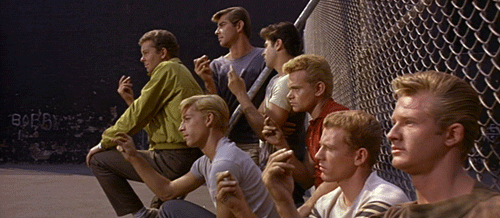
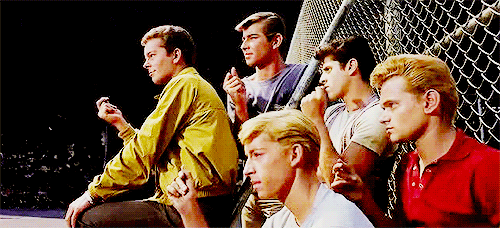
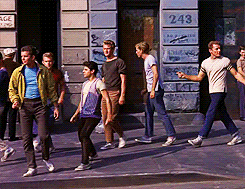
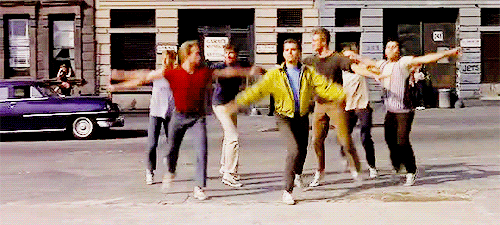
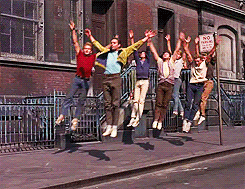
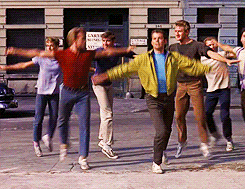
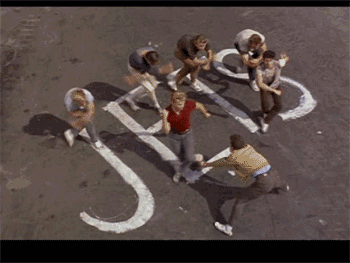








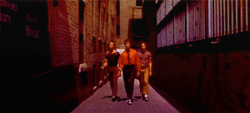
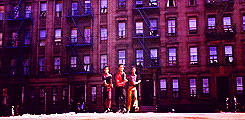
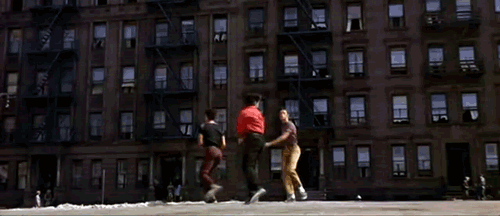

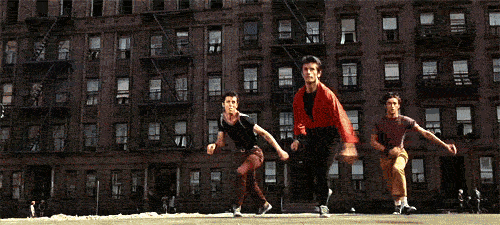

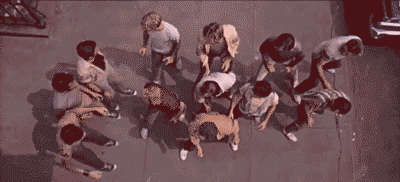


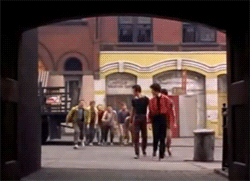
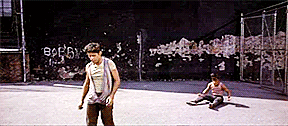
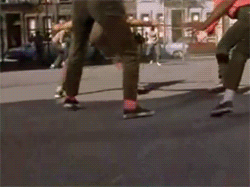


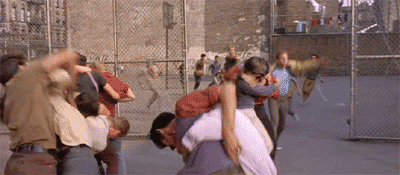



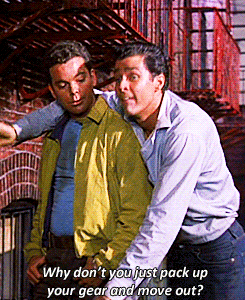
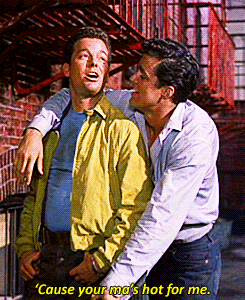
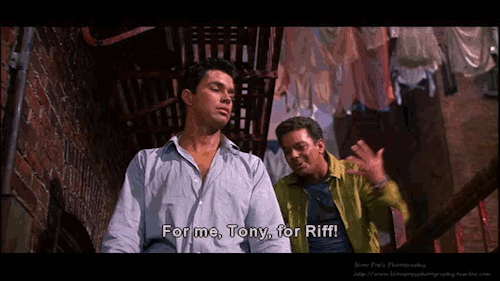
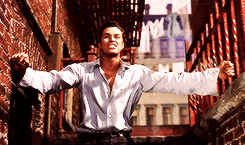





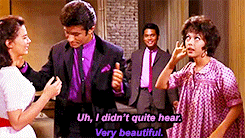
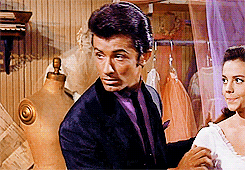


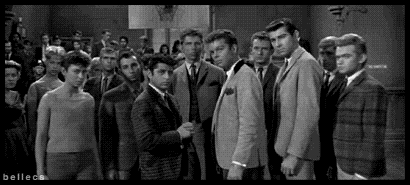
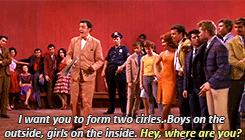
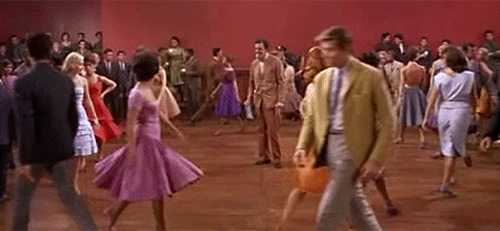
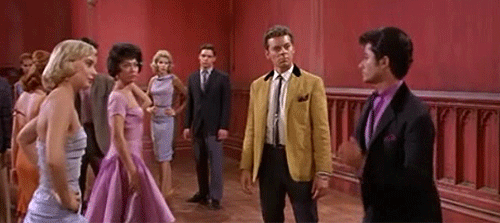


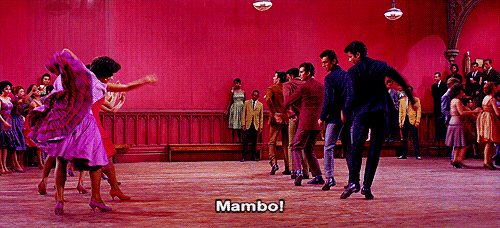


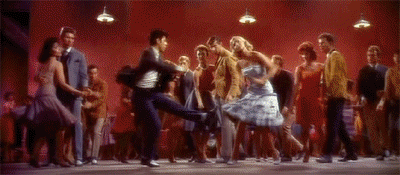
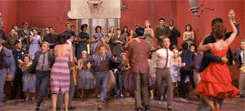
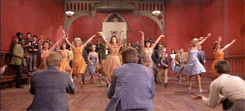
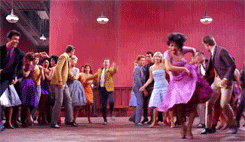

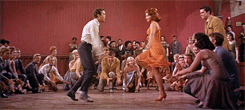



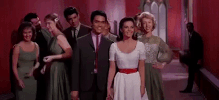


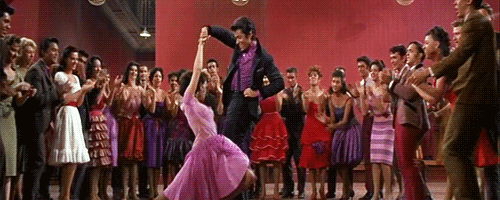

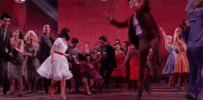
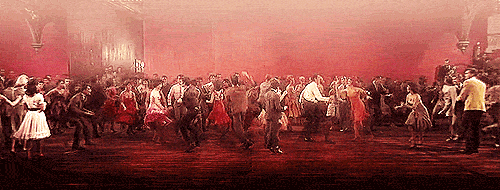
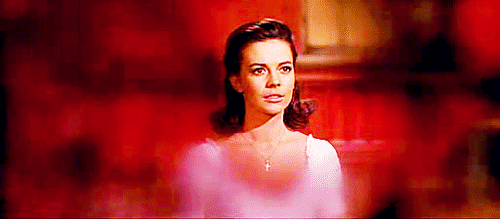
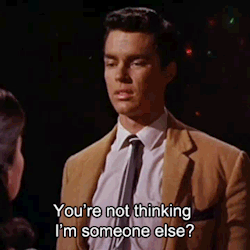
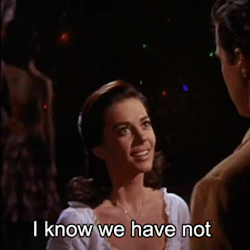
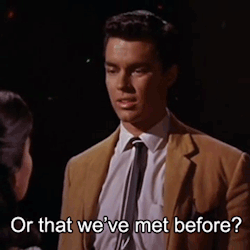
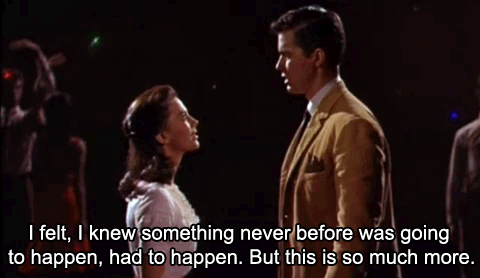

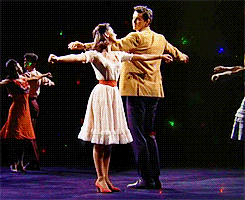
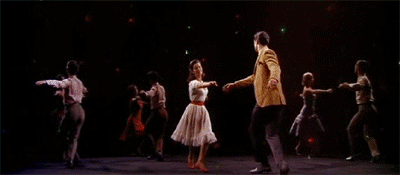
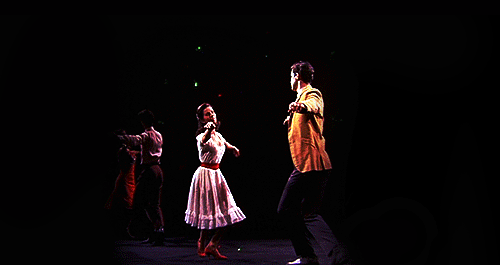
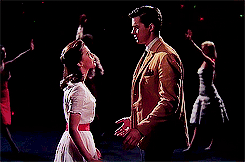
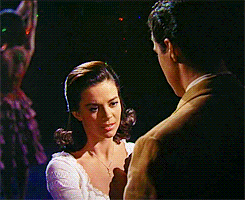
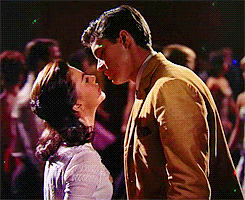
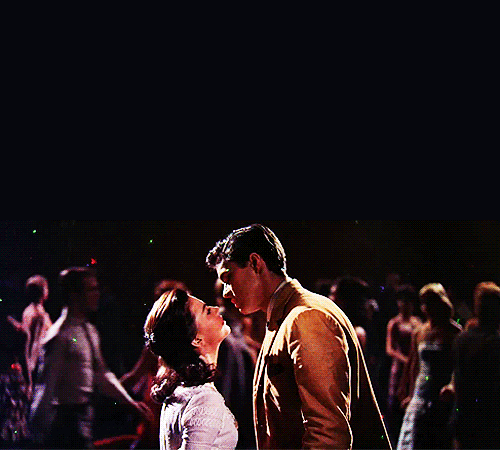

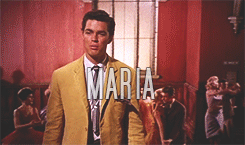


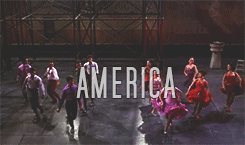
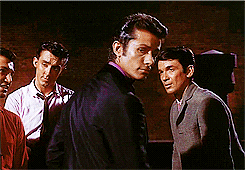
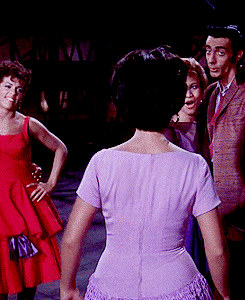
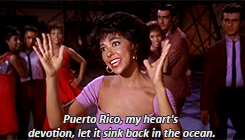
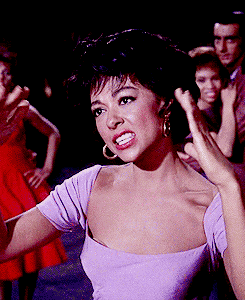


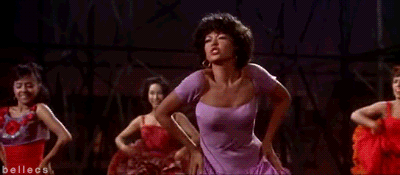
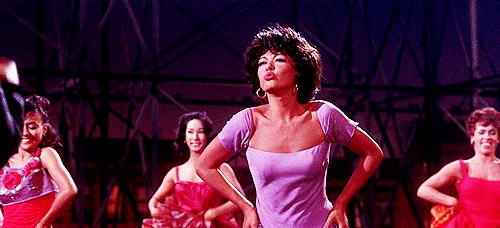
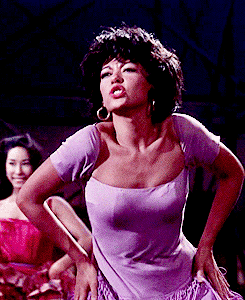

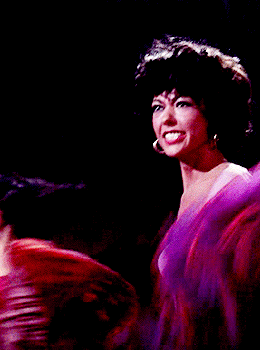


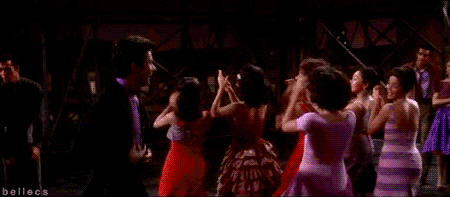
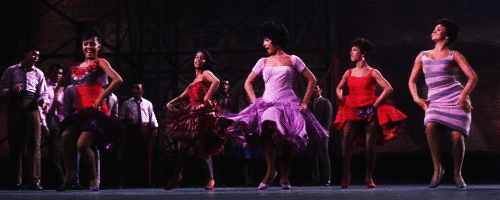


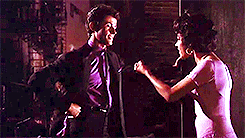






















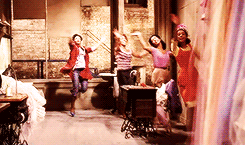
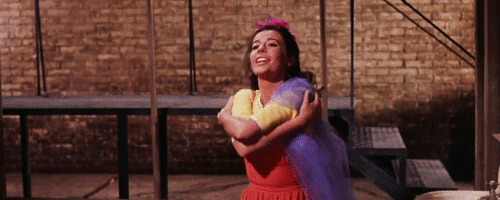
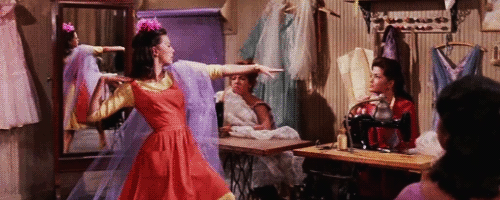
























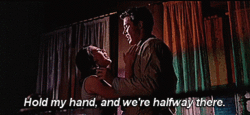

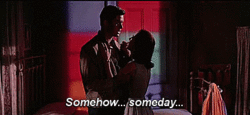




































































.jpg)







.jpg)





.png)




.jpg)






.jpg)













.jpg)


.jpg)










.jpg)



.jpg)

.gif)

.jpg)



.jpg)

















.jpg)
.jpg)

.jpg)
.jpeg)
